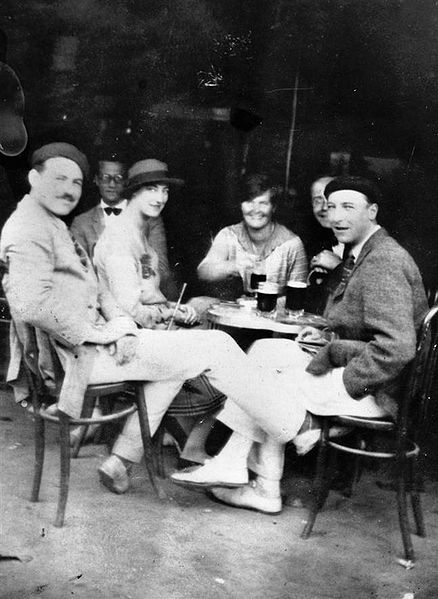What follows is an abstract for a paper I will be presenting at “Food! The Conference,” the English Student Association‘s interdisciplinary graduate conference at the CUNY Graduate Center on March 18, 2011. I will be speaking during the second session, at 10:30 in room 8400 of the GC (with the likes of Indiana University’s Andrew Hamilton on hand to discuss Luther and Hoffmansthal afterward):
“Are you trying to insult me?”
“No, hombre, only to make a joke.”
(Hemingway, Winner, 22)
This exchange between two waiters in Ernest Hemingway’s “A Clean, Well-Lighted Place” exemplifies the kind of misunderstanding that continually resurfaces in Hemingway’s short fiction set during idle time spent drinking and lingering in cafes, circumstances that would seem to cater to rather than hamper effective communication. This raises the question, why do diners, drinkers, and other characters in Hemingway’s stories recurringly misinterpret their interlocutors’ intents?
In a 1927 review of Hemingway’s story collection Men Without Women, Virginia Woolf noted that Hemingway’s reader is faced with an unusually great responsibility due to “what [Woolf] regarded as an excessive use of dialogue” (Donaldson, 340), griping that the reader “has to hear, to see, to supply the right tone, and to fill in the background from what the characters say without any help from the author” (qtd. in Donaldson, 340). Such observations of Hemingway’s work have focused criticism on his characters’ dialogue in order to determine what work this oral mimesis does perform. But what can we learn by taking such investigations in new directions?
Specifically, I employ J. L. Austin’s speech act theory as a lens through which to reexamine Hemingway’s short stories set in cafes, reconsidering “Hills Like White Elephants” from the collection Men Without Women and “A Clean, Well-Lighted Place,” “The Sea Change,” and “Homage to Switzerland” from Winner Take Nothing. These works portray characters who not only exert oral output in the form of generally unsuccessful speech acts, but also drink and smoke or facilitate others’ oral ingestion of liquor and tobacco in their café environs, often using or allowing that oral intake to obfuscate the intake of other drinkers’ or bartenders’ conversational intents. Like Hemingway, Austin is interested in how conversations progress in relation to the goals of their speakers. In this paper, I find that Austin’s concern regarding how spoken language is used can illuminate the subtexts of Hemingway’s writing, delineating how misinterpretations and misrepresentations of one another’s intended meanings shift the possession of power among characters, upsetting social roles set by norms of setting, sexuality, gender, and nationality.



